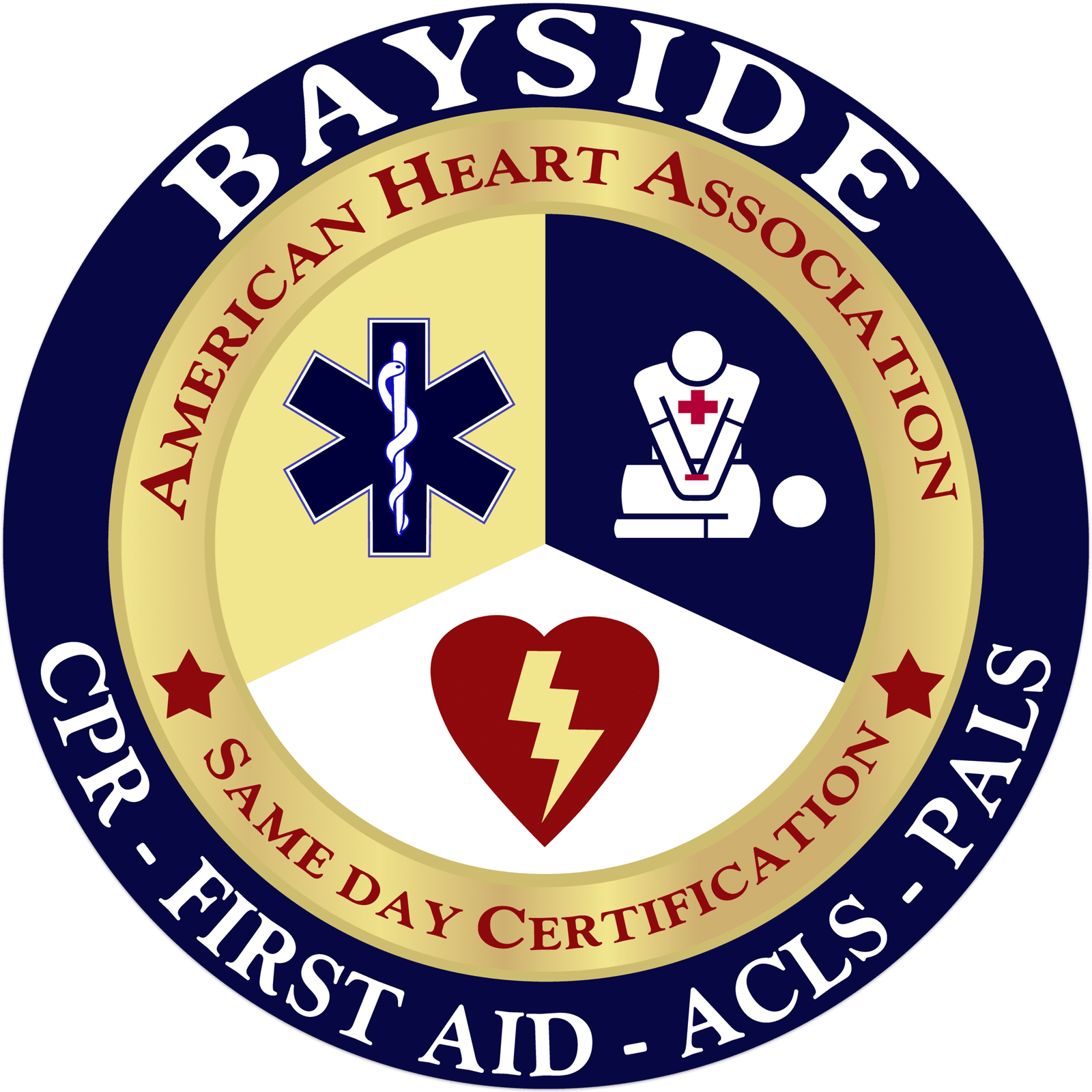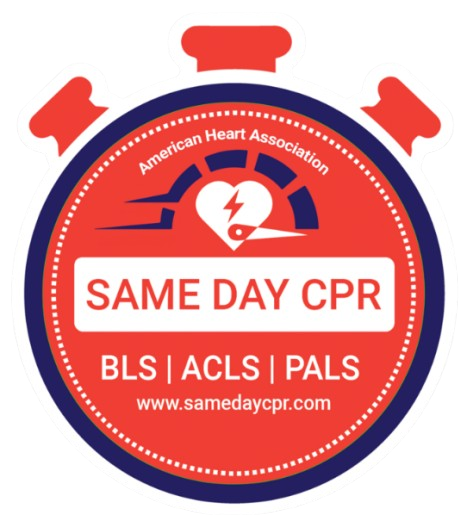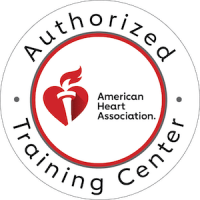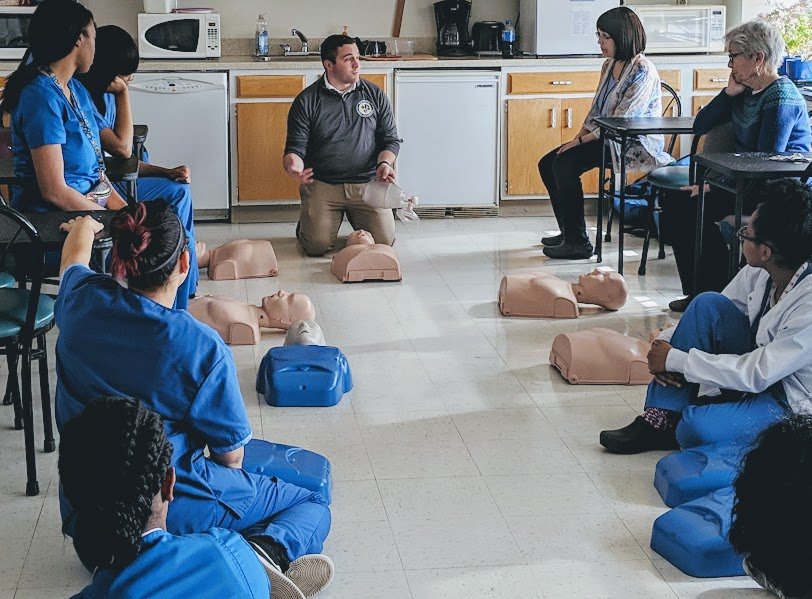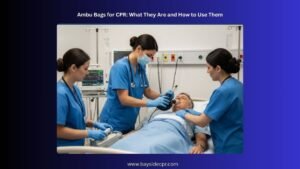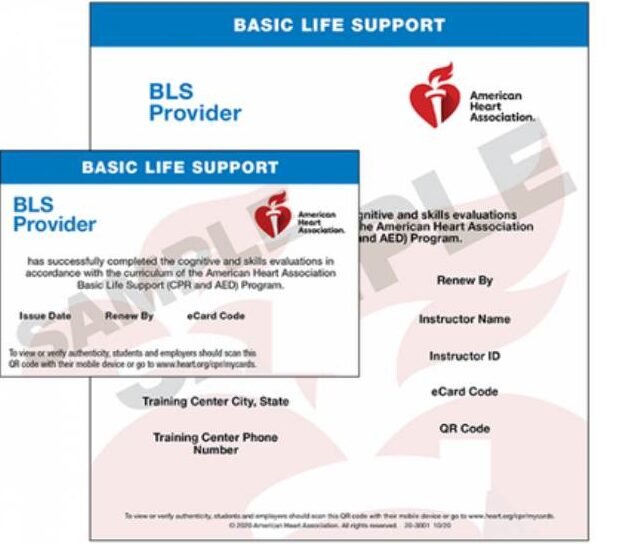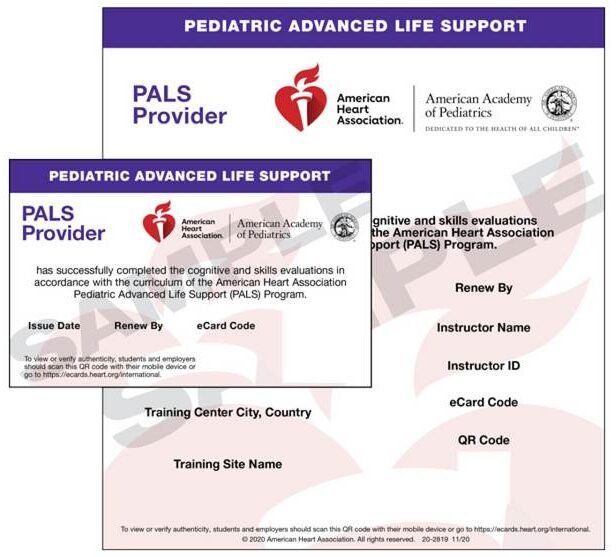An ACLS (Advanced Cardiovascular Life Support) Megacode is a simulated emergency scenario used in ACLS training to test and reinforce a provider’s ability to manage life-threatening cardiac events using the ACLS algorithms and protocols. It involves hands-on participation in a timed, team-based code situation.
ACLS Megacode scenarios are designed to closely mimic real-life cardiac emergencies, giving healthcare providers a realistic and challenging environment to apply what they’ve learned. These simulations test not just medical knowledge, but also how well providers perform under pressure.
By working through these timed drills, practitioners sharpen their ability to recognize rhythms, deliver proper treatment, and communicate effectively as part of a team. These scenarios are a powerful way to build confidence and train healthcare providers to stay calm during cardiac arrest or respiratory failure.
What are 7 ACLS Megacode Scenarios?
Before you face real emergencies or take your ACLS skills test, it’s important to get familiar with the types of heart-related situations you’ll be expected to manage. ACLS training uses realistic scenarios to help you recognize, respond to, and treat a variety of life-threatening conditions such as fast or slow heart rhythms, cardiac arrest, stroke, and heart attacks. Each scenario teaches you how to stay calm, follow the correct steps, and work with a team to help save a life. Here are those 7 main scenarios covered in ACLS Megacode training:
1. Tachycardia (Fast Heart Rate)
In ACLS training, tachycardia means a heart rate that’s too fast, usually over 150 beats per minute. You’ll learn how to check if this fast rhythm is causing the patient chest pain, shortness of breath, dizziness, or low blood pressure. If the patient is stable, you might try the vagal maneuvers technique or give medications like adenosine to slow the heart. But if the patient is unstable, you’ll practice using synchronized cardioversion, an electrical shock given at the right moment to help reset the heart’s rhythm.
2. Bradycardia (Slow Heart Rate)
Bradycardia is when the heart beats too slowly, typically less than 60 beats per minute, as a normal heartbeat is 60-100 beats per minute. While this can be normal in some healthy people, it becomes dangerous if the slow rate causes symptoms like confusion, weakness, or fainting. In ACLS training, you’ll learn how to assess the patient and decide if treatment is needed. You’ll practice giving atropine, which can speed up the heart, and learn when it’s time to move to more advanced options like transcutaneous pacing or IV medications like dopamine or epinephrine to support the heart.
3. Ventricular Fibrillation (V-Fib)
V-Fib is one of the most serious heart rhythms because the heart stops pumping blood effectively, it just quivers. In ACLS scenarios, this is treated as a full cardiac arrest. You’ll learn to respond right away with high-quality chest compressions and deliver a shock using a defibrillator. You’ll also give medications like epinephrine and amiodarone, and you’ll work as part of a team to alternate CPR, shocks, and medications. These scenarios help you practice staying calm and organized during life-or-death emergencies.
4. Supraventricular Tachycardia (SVT)
SVT is a fast, regular rhythm that starts in the upper chambers of the heart (atria). While it may not always be life-threatening, it can make patients feel anxious, dizzy, or short of breath. ACLS training teaches you to spot SVT on a monitor and try simple tricks like vagal maneuvers to slow it down. If that doesn’t work, you’ll learn to give adenosine, which is a medication that briefly stops the heart to reset its rhythm. You’ll also be prepared to perform cardioversion if the patient becomes unstable.
5. Stroke
A stroke happens when the blood flow to part of the brain is blocked or slowed down. We need to act quickly to prevent serious brain damage. In ACLS training, you learn how to spot common stroke signs like facial drooping, arm weakness, and slurred speech, which is remembered with the word FAST (Face, Arms, Speech, Time). You’ll also practice calling for help right away, getting the patient ready for a brain scan, and preparing for advanced treatments like clot-busting medicine if needed.
6. Pulseless Electrical Activity (PEA)
PEA is tricky because the monitor shows a normal-looking heart rhythm, but the patient has no pulse. That means the heart isn’t pumping. In these situations, you’ll begin CPR right away and give epinephrine every 3–5 minutes. One of the most important parts of ACLS training for PEA is learning to look for “H’s and T’s”, the reversible causes of cardiac arrest. So, identifying these underlying causes must be a high priority to help increase the survival rate.
7. STEMI (ST-Elevation Myocardial Infarction)
STEMI is one of the severe forms of heart attack that shows up as ST elevations on a 12-lead ECG, which occurs if a coronary artery is completely blocked. This results in an insufficient blood flow and oxygen to the heart muscle. In ACLS, you learn how to recognize the signs, like crushing chest pain, sweating, nausea, or pain spreading to the arm or jaw. You learn to give oxygen, aspirin, nitroglycerin, and morphine, and prepare the patient for rapid transport to the Cath lab for PCI, which is a heart procedure that opens blocked arteries. If PCI isn’t available, you’ll also learn about fibrinolytics as an alternative.
Key Components of ACLS Megacode Scenarios
ACLS Megacode scenarios follow a structured approach to managing cardiac emergencies. Understanding each step in this process is essential for success during your skills test and in real-life situations. Below are the core components that every provider should be familiar with.
Initial Assessment (Start with BLS Basics)
- Check responsiveness and breathing
- Call for help and activate the emergency response system
- Assess pulse and begin CPR if needed
Rhythm recognition
- Use a monitor or defibrillator to identify the patient’s cardiac rhythm
- Recognize rhythms like VFib, pulseless VT, asystole, or PEA
Use of the Correct ACLS Algorithm
Follow the specific treatment pathway based on the rhythm:
- Shockable (VF/VT): CPR, defibrillation, epinephrine, amiodarone
- Non-shockable (PEA/Asystole): CPR, epinephrine, rhythm reassessment
- Bradycardia: Atropine, pacing, or dopamine/epi infusion
- Tachycardia: Vagal maneuvers, adenosine, cardioversion
Airway and Breathing Management
- Open the airway and provide high-flow oxygenm
- Use bag-mask ventilation or consider an advanced airway if needed
Medication Administration
- Know what drugs to give, when to give them, and at what dosage
Effective Team Communication
- Clear roles and responsibilities
- Closed-loop communication
- Staying calm and coordinated under pressure
Post-Resuscitation Care
- Maintain oxygenation and blood pressure
- Get a 12-lead ECG
- Prepare for ICU care and further evaluation
Roles in a Megacode Team
– Team Leader: Directs actions, makes decisions
-Compressor: Delivers high-quality chest compressions
-Airway Manager: Maintains airway, provides oxygen
-IV/IO Access: Administers medications
-Recorder/Timer: Tracks time, meds, and events
Evaluation in ACLS Megacode
During the ACLS Megacode, you’re not just tested on what you know, but also on how you apply that knowledge in a high-pressure situation. Instructors watch for key skills to make sure you can respond effectively during a real emergency. Here’s what they mainly evaluate:
- Correct Algorithm: It is important to follow step-by-step treatment guidelines according to the patient’s condition. Using the proper algorithm indicates your knowledge of what steps to take and when.
- Timely Decisions: Prompt and precise action is crucial in emergencies. Your performance will be evaluated based on how quickly and accurately you respond, particularly when initiating CPR, administering medications, or determining when to deliver a shock.
- Accurate Rhythm and Medication Use: It is essential to accurately recognize heart rhythms on the monitor and select the appropriate medications at the proper times. You need to be well familiar with drug names, dosages, and timing of administration.
- Clear Communication and Teamwork: You’ll be tested on how well you talk with your team. This includes giving clear commands, sharing tasks, and making sure everyone is working as one group in the given scenario.
Importance of ACLS Megacode
ACLS Megacodes are an important part of training because they help you practice what to do in real emergency situations. They let you apply your skills in a safe, controlled setting so you’re ready to act fast and correctly when it matters most.
Practice Real-Life Scenarios
They mimic actual emergencies, helping you apply what you’ve learned in class. You get to walk through full situations from recognizing the problem to giving the right treatment. This helps you feel more prepared and confident when emergencies happen.
Build Confidence: Repeated practice helps reduce panic in real situations. The more you go through these drills, the more natural it feels to take action. You’ll start to trust your skills and stay calm under pressure.
Improve Patient Outcomes: By practicing what to do, you’ll learn how to respond faster and make fewer mistakes. This can make a big difference when an emergency arises where every second counts.
Enhance Team Work: Megacodes help you learn how to lead or support in a team during resuscitation. You’ll practice giving clear instructions, listening to others, and working together to give the best care. This kind of teamwork is essential during real emergencies.
Final Thoughts: ACLS Megacode Scenarios
ACLS Megacode scenarios are a powerful way to turn knowledge into real-life skills. They help you think fast, work well with a team, and stay calm during emergencies. With regular practice, you’ll build the confidence and ability to make a real difference . Keep learning, keep practicing, and trust your training.
Enroll in our ACLS training at Bayside CPR & AED Training Center, where we’re always ready to help you build the skills and confidence you need to handle real-life emergencies.
